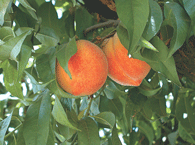PlantDetails
Plant Information

Plant Code L1313
Prunus persica 'Flordaqueen'
Flordaqueen Peach
Spring
No
No
Medium
20-30' H x 20-30' W
20-30'
Pink
Zone 8
(20 to 10°F)
Full Sun
6+ Hours Direct Sun
Additional
Information
Successful growing requires excellent drainage.
Back
NEW